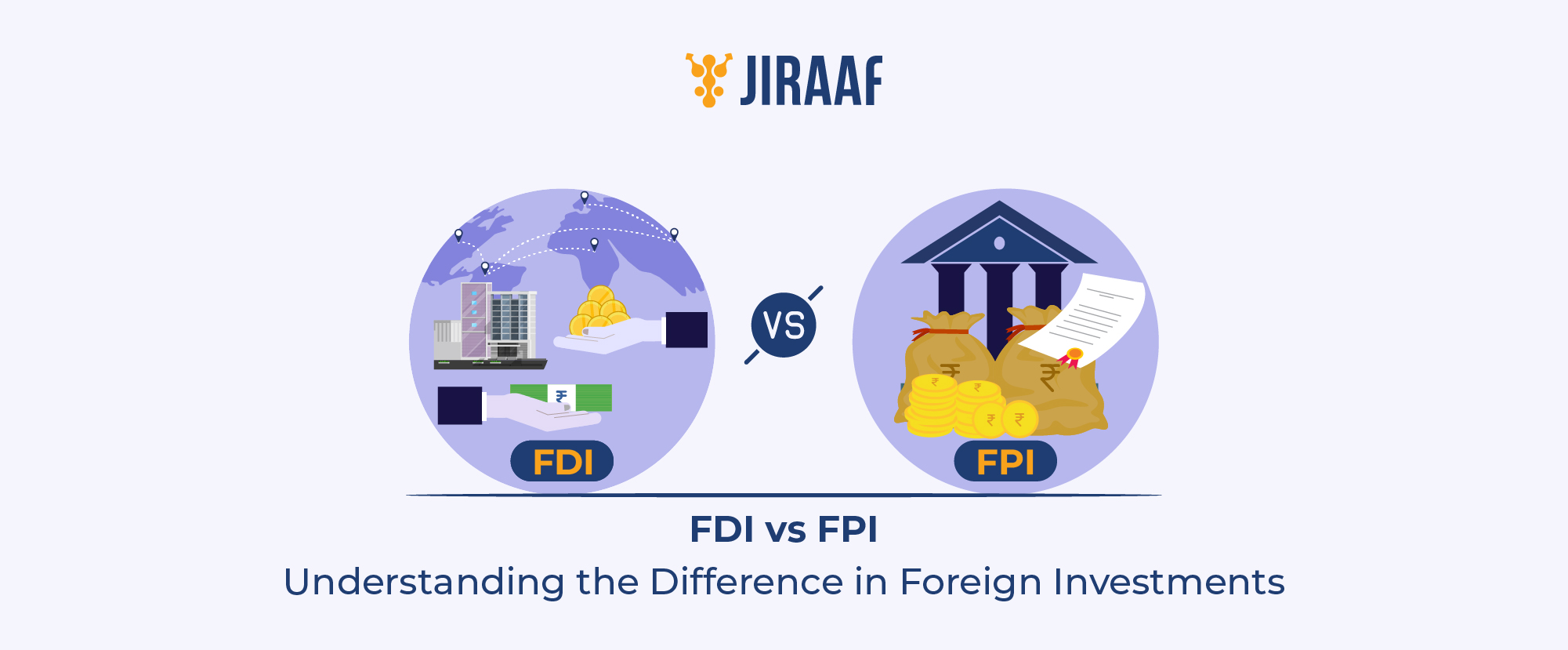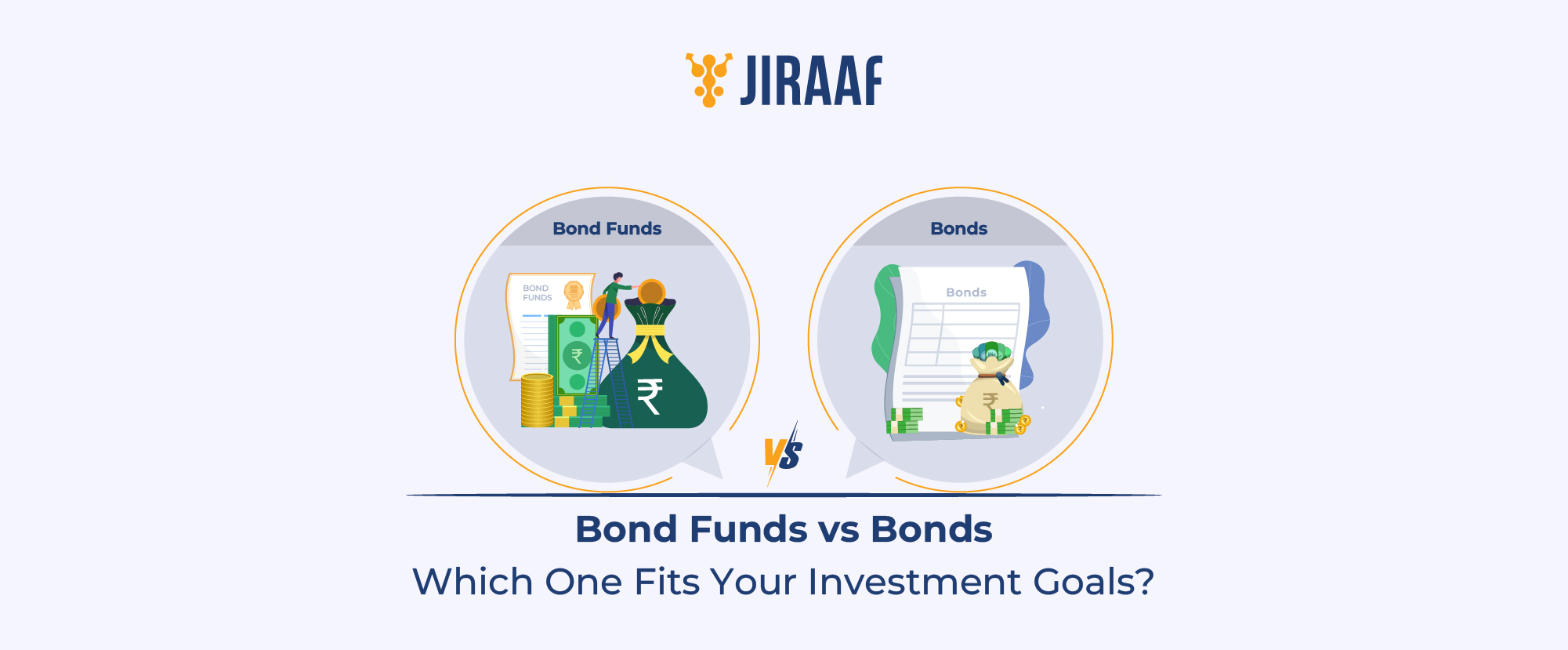Money today moves faster than ever—across borders, industries, and time zones. For a fast-growing economy like India, these capital inflows are more than just numbers on a balance sheet. They shape how industries expand, how jobs are created, and even how the stock market behaves.
But not all foreign investments work the same way. Some investors set up factories and offices, while others buy shares or bonds and move on when conditions change. These two approaches are called Foreign Direct Investment (FDI) and Foreign Portfolio Investment (FPI) and understanding the difference between these can help you make sense of how global money influences your portfolio.
What is Foreign Direct Investment (FDI)?
Foreign direct investment is when a company or investor from one country invests directly in another country’s business by setting up operations, acquiring assets, or taking a controlling stake.
Think of it as a long-term partnership. The investor doesn’t just provide money—they get involved in management, operations, and decision-making. Because of this, FDI usually brings jobs, technology, and stability to the host country.
Examples:
- Amazon and Walmart (Flipkart) are investing billions to grow India’s e-commerce sector.
- Foxconn, Apple’s manufacturing partner, is setting up plants to make iPhones in India.
For investors, rising FDI inflows signal long-term confidence in India’s economy. When large multinationals invest billions, it reflects a belief in India’s growth story which often supports sectors like manufacturing, logistics, and tech in the stock market.
But not every investor wants to build factories or manage operations. Some prefer to tap into India’s growth from the market side—gaining exposure through stocks and bonds instead of physical assets. This is where foreign portfolio investment comes into play, offering flexibility without the long-term commitment of FDI.
What is Foreign Portfolio Investment (FPI)?
Foreign portfolio investment occurs when global investors invest in financial assets like stocks, bonds, or mutual funds, without taking control of the underlying businesses.
FPIs move fast. They can enter or exit a market depending on global cues such as interest rate changes, inflation, or geopolitical shifts. That’s why FPI flows are often called “hot money”. When optimism runs high, this capital rushes in and fuels rallies; when uncertainty rises, it exits just as quickly—often triggering short-term volatility.
When FPIs pour in, markets usually rally—liquidity improves, stock valuations climb, and overall sentiment strengthens. But when they pull out, markets can face corrections or sharp dips. For retail investors, tracking FPI activity offers insights into near-term market behavior and global confidence in India.
Both FDI and FPI bring foreign capital into the country, yet their intent, impact, and stability are entirely different. To understand how each shapes India’s economy and markets, let’s break down their key differences side by side.
Key Differences Between FDI and FPI
FDI builds the economy from the ground up, while FPI drives the financial markets—understanding this difference helps investors see where real growth and short-term sentiment come from.
| Characteristics | FDI | FPI |
| Nature of Investment | Direct investment in physical assets or management control | Investment in financial assets like shares, bonds, or funds |
| Ownership Stake | 10% or more of the equity capital of an enterprise | Usually less than 10%, without control |
| Investment Horizon | Long-term and stable | Short-term and market-driven |
| Investor’s Involvement | Active role in management and operations | No direct involvement in management |
| Form of Investment | Factories, infrastructure, R&D centers | Stocks, mutual funds, debt securities |
| Risk Exposure | Higher setup cost but stable returns | Market volatility and capital flow risk |
| Impact on Economy | Creates jobs, boosts production and exports | Improves market liquidity and investor sentiment |
| Regulatory Oversight | Heavily regulated, needs government approval in sensitive sectors | Comparatively easier entry and exit |
| Examples | Amazon, Walmart, Foxconn, Hyundai | FPIs investing in Nifty 50, Government Bonds |
| Sector Focus | Manufacturing, retail, technology, infrastructure | Equity markets, debt instruments, ETFs |
Now that we’ve differentiated between the two, let’s understand why this distinction matters and how each type of investment contributes uniquely to economic growth.
Importance of FDI and FPI in Economic Growth
FDI brings more than just capital. It strengthens India’s real economy—the part that produces goods, builds factories, and creates jobs.
- Infrastructure & Industrial Growth: FDI funds long-gestation projects that drive productivity and exports.
- Technology & Skills: MNCs bring global practices, upskilling Indian talent.
- Employment: More factories mean more jobs, leading to higher consumption and GDP growth.
- Stability: FDI is long-term and less likely to exit during market volatility, offering resilience to the economy.
For investors, a steady rise in FDI means the underlying economy is strong, which supports consistent market performance over time.
While FDI builds physical assets, FPI strengthens financial systems.
- Liquidity: FPIs keep markets active and dynamic.
- Confidence: Rising FPI inflows show trust in India’s policies and corporate performance.
- Diversification: FPIs bring global capital into multiple sectors, improving efficiency and transparency.
- Currency Stability: Higher FPI inflows add to foreign exchange reserves, helping stabilize the rupee.
For individual investors, monitoring FPI trends can serve as a sentiment gauge—showing when global investors are optimistic or cautious about India.
Conclusion: FDI vs FPI: Which is Better for the Economy?
Together, FDI and FPI stabilize the balance of payments and reinforce India’s economic resilience. While FDI strengthens the real economy through assets, employment, and technology, FPI sustains market confidence and liquidity, creating a steady cycle of investment and growth.
Even with occasional outflows like dividends and royalties, their combined effect remains largely positive. They don’t just bring capital; they bring credibility—a signal to the world that India remains a reliable, opportunity-driven economy. Managing these inflows wisely ensures that foreign investment continues to serve as both a growth catalyst and a stabilizer for India’s financial future.









